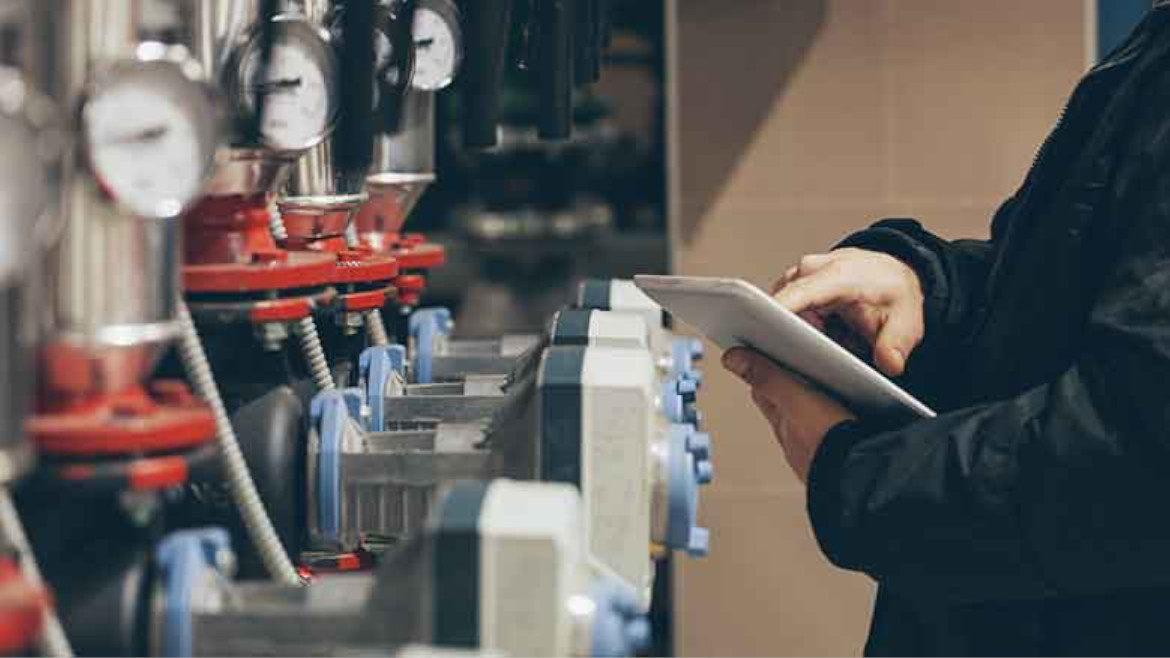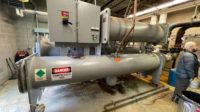Getting a new retrofit boiler or even installing one for a new process is a journey. There’s a lot of places you can go to get very basic information about boilers; however, there’s few places to go and resources you can consult that will help you to avoid very unwelcome surprises on this journey. In this article, I am providing 10 special insights that have made for pain and suffering in boiler journeys that I have witnessed. These are the best of the best issues from 40 years of being in and out of more than 300 industrial plants in 12 different countries and watching the wringing of hands and the gnashing of teeth. Pay attention, and you’re likely to find some nugget here that will be an “aha!” moment for your journey.
1. Can You Change Heat Source Technologies (i.e., Do Something Other than a Boiler?)
For at least 30 years, it’s been trendy to do away with central steam plants and boilers wherever possible and replace them with point-of-use space heating or process heating equipment. Decentralization can have many efficiency benefits. Decentralizing is not always a slam dunk, and it has to carefully analyzed, but it’s been an undeniable popular trend.
If you can’t decentralize and you’re currently using steam, can you switch that up to hot water/hydronic? Can you pick off some remote loads and cut down on distribution systems? What about the nature of your loads? Are they largely seasonal? Can you redesign for a summer shutdown of your central plant? All of these are start-of-the-project considerations to better define loads and technologies to deploy.

2. Trust Me, You Need More Than Just a Boiler
If it’s time for a new boiler, (i.e., a retrofit), then it’s likely time for more than just a boiler. If you don’t think this, then you’re not looking hard enough or in the right places. This is a time for non-destructive testing (NDT) to evaluate the condition of your deaerator, condensate tanks, and feedwater piping that is in especially vulnerable areas. What about feedwater and condensate pumps? This just scratches the surface of possible needs. I can go on and on. It’s been my experience that you will instantly lose credibility if, a year later, you come back asking for more funding to address issues you missed, so do a fantastic investigation and scoping job right now.
An often-overlooked area for replacement is feedwater piping. The discharge of feedwater pumps is usually a part of piping systems that are susceptible to flow accelerated corrosion (FAC). This is a phenomenon that occurs when a high-velocity or turbulent area sees lots of oxygen molecules. It’s a really aggressive failure mechanism you should take very seriously. Ultrasonic thickness testing, which is not a very costly technology, can find eroded piping quickly.

3. Overall Risks Associated with the Fuel and Boiler Should Be Considered
Was there ever a process hazard analysis (PHA) done in the life of the boiler facility? I am on a number of National Fire Protection Association (NFPA) code committees. The process safety world is being introduced to the codes and standards world very aggressively. The term PHA did not appear in NFPA documents a few code cycles ago. Now, it’s being added and referenced in many documents. A great place to learn about PHA’s is with the American Institute for Chemical Engineers website. Also, OSHA’s Process Safety Management (PSM), program has considerable information about PHAs.
It’s quite possible the very location of your boiler systems and/or the technology in use is a complete mismatch for the facility today. For example, maybe the walls are not even fire-rated for what would be required today. Maybe the location of the boilers is near dormitories where kids now live. Maybe you can replace drum-type steam boilers with instantaneous steamers or hot water systems to reduce stored energy in these systems if this is the case. These are all risk considerations, and it starts with a PHA led by a skilled facilitator.
This is not just the time to think about explosions. It’s also the time to think about big steam leaks and how steam might get shut off. It’s time to think about emergency plans and where fuel would get shut off. It’s also time to think about reliability. Should you add connections for an emergency rental boiler at this time?
This might also be a time to think about reliability and inherent design risk mitigation. This might start with thinking through sparing philosophy, (i.e., a couple of smaller units instead of one big one). It’s always better to be able to be “freeze protected” or in some partial production with part of your boilers down than to have only one boiler and being completely out of the space or process heating business.

4. Who Are Some of the People Who Need to Be Involved?
People hate to feel disrespected. Sometimes, when they are, they feel like they need to intervene just to remind others they exist. Such could be the case if a designer forgets to involve a jurisdictional insurance provider, corporate risk management team, corporate environmental staff, or even the local building department, assuming a building permit was required.
In the case of boilers, it’s especially important to include the jurisdictional folks early. Companies or institutions may have boiler insurance, and a carrier may require certain safety options be installed. You don’t want to have a new system installed and then be denied coverage on that object. They don’t do that often, but they can.
Don’t forget about the environmental compliance folks. There may have to be changes to a project’s air permits. The air permit requirements might also drive the burner style that is specified (i.e., low NOx).
5. OK, Is it Like for Like, or Are We Changing up the Style or Type?
Replacing like for like (i.e., watertube for watertube, firetube for firetube, same size for same size) has lots of advantages. Switching up is OK, but there could be lots of things that go with it that you need to consider. For example, I have seen cases where steam boilers have been changed out in commercial facilities, and the new boilers hold less water. Hence, there’s a flooding of the system when condensate returns. Then, destructive water hammer occurs or lots of valuable condensate ends up in the sewer soon after every startup and shutdown.
Firetube boilers are very forgiving, change loads well, and water treatment is not as critical as it is with an instantaneous steamer. If you went with an instantaneous steamer in place of an existing firetube and you don’t have a lot of condensate return and little operational support, is that really the best long-term answer for you? I doubt it. Errors with feedwater quality with these kinds of systems can become serious very quickly.
Remember also that if you switch technologies, there may be new special requirements for clearances. This can be clearances to combustibles, like floors. It could also be clearances required for firetube boiler installations so that new tubes can be installed if they are ever needed.

6. A Few Words on How “Green” the Thing Is and Why
Efficiency and green are wonderful but not at the expense of reliability. Lose a day of production or send everyone home for a day because of a reliability issue and then let me ask you how it went when you reminded everyone that this new “green machine” saved some energy dollars or carbon.
Low NOx burners can be wonderful for the environment and might be required for air permits. However, they generally have lots more moving parts, (possibly flue gas recirculation, for example). They can also have somewhat exotic burner technologies in use that can be somewhat delicate in their operation.
If you need Low NOx for air permitting or to meet corporate carbon goals, then great. If not, there are likely more conventional technologies that are less expensive and more maintenance- and technician-friendly to choose from.
Combustion controls and technologies related to efficiency can also be somewhat maintenance-intensive and can involve more retrofit work than you intended. In some cases, flue gas venting will have to be carefully considered because of the much colder flue gases. Efficiency is great, just make sure you consider all of the consequences of what comes with the efficiency.
7. What Technological Options Should I Consider with the New Boiler?
There’s a technology arms race of sorts playing out in the fired equipment world. Everyone is boarding the Internet of Things (IoT) train, and it’s headed down the tracks at you. This means many of the boilers available today come with lots and lots of blinking lights and human machine interface (HMI) graphics panels — lots of neat capabilities that were never there before.
The only problem I have with it is that now it’s a matter of repairs and diagnosis with laptops that involve some service contractor and not your staff. In today’s world of labor shortages, when will these folks even show up if there is a need? Do you really need these extra bells and whistles? Do you even understand at the time of purchase that you got married to a local service provider, and there’s absolutely no way out?
Make sure you ask about things like if there are limitations on who can do service and why. Make sure you get strategic spare parts at the time of your installation. Some fuel train valves can take six to eight months to get at the time of this writing. Can you afford to be down for that long?
How do you communicate with the devices? Will you get passwords? Is there wireless in the plant or facility? Do you need to install a communications cable to tie the new boiler into your facilities network? Is there now a possible security or hacking issue with the operation of the boiler that can damage your operations? These are all things you have to think of now.
8. What Are the Implications for Commissioning, Training, Operating Procedures, and Ongoing Maintenance?
Did you buy commissioning and startup? It’s usually an option that’s quoted as an extra, but it’s truly a necessity. It’s likely the warranty may be impacted if it’s not a factory startup person. Commissioning is often like buying a house, getting married, or dying. These are not things we plan to do very often. Hence, it’s hard to know what to expect. Let me give you a few things to require. One is that setpoints of all devices (high and low gas pressure switches, combustion air proving switches, and low fire start), be set in the field with data to back up and justify their settings. The other is that fuel-air ratios be set and verified once the equipment is warmed up from 0%-100% load and then in reverse.
Remember, to check air-fuel ratios at load means you have to have a load. In the case of steam systems, depending on the weather and your system’s configuration, this may mean you need to have a steam vent with a silencer. Some folks are shocked and disappointed they need this, never had one, and then need to scramble for the money and time to put one in.


What will training look like? You need to review NFPA 85 and other relevant, applicable, consensus documents to make sure you meet these requirements. There are specific categories of things that need to be covered. It’s very unlikely that whatever the boiler vendor calls training really meets the requirements of what the applicable codes and standards require. The next time I see that standard vendor offering being in compliance will be the first time I’ve seen it in 40 years.
In the cases, I have worked as a forensic expert for the Occupational Safety and Health Administration (OSHA), most of the time there are not adequate procedures. The applicable codes and standards contain minimum requirements for procedures, including things like start-up/shutdown, lockout/tagout, maintenance, etc. Make sure you plan some time to create what you need and don’t defer to, “Well, it’s in the manufacturer’s operations manual.” Make it fit your facility, and make sure your people are trained in it and that it’s always readily available to them.
Ongoing maintenance will need to include considerations for both day-to-day operations, like maintenance of water quality conditions along with periodic safety device testing. Decide now what parts will be addressed in-house and which will require outside contractors. Make sure your people have the tools and training to meet any special needs.
9. Yes, You Need to Meet the Requirements of all Current (Latest Edition) Applicable Codes and Standards
Remember, too, that since you are installing all new recognized and generally accepted good engineering practices (RAGAGEPs), this means all applicable codes and standards and internal guidance documents must be met. Every forensic case I take after a horrible disaster starts with what RAGAGEPs might have been ignored. In the case of boilers, at a minimum, these are NFPA 54 (National Fuel Gas Code), NFPA 85 (Boiler Combustion Hazards Code) for boilers 12,500,000 Btuh input or greater, and ASME CSD-1 (Controls and Safety Devices for Automatically Fired Boilers) less than 12,500,000 Btuh input. There are likely also state boiler and pressure vessel laws you will need to consider.

An example of things to consider with code compliance is the requirement within ASME CSD-1 to have E-stops at doors from the boiler room. It actually reads like this:
“… A manually operated emergency shutdown switch or circuit breaker shall be located just outside the boiler room door and marked for easy identification. Consideration should be given to the type and location of the switch to safeguard against tampering. If the boiler room door is on the building exterior, the switch should be located just inside the door. If there is more than one door to the boiler room, there should be a switch located at each door. Activation of the emergency shutdown switch or circuit breaker shall immediately shut off the fuel or energy supply. …” Not every state is an ASME CSD-1 state — ask a jurisdictional inspector to be sure. Even if you are not required to do this, it’s not a bad idea.
Being in compliance with the latest issues in NFPA 54 means things like you need to be aware of proper purging procedures for when the gas piping installation happens. You should make sure the gas piping for the project contains purge points and the required methods for isolation. All NFPA codes and standards are available for free viewing at www.nfpa.org.
10. Beware of Three of the Biggest Possible Blunders
Of course, I can’t possibly cover all of the worst possible blunders, but here’s three that can really hurt your facility, pocketbook, and career.
a. Selecting a Pressure Capability that Is Not Compatible with the Rest of the Boilers or System — If you’re retrofitting in a new boiler to an existing steam system that is also served by other boilers, you need to be careful that the new boiler you purchased and the safety relief valves are compatible. Remember, in the boiler world, high pressure is considered everything above 15 psig. Every boiler should have a placard from the National Board of Boiler and Pressure Vessel Inspectors (National Board) that identifies its maximum allowable working pressure (MAWP). Make sure what you buy matches what you had in place and that it is compatible with the other boilers at the site. You will also need to match safety relief valve capabilities.
If you buy the wrong pressure capability equipment, especially if your mistake is on the low side, you’re in real trouble. You may have to sell the boiler back for pennies on the dollar and get a new one fabricated. It could be really ugly.
b. The Flue Gas Venting Systems Are Not Compatible with Each Other (Old to New) — If the rest of the boilers are natural draft or the old one was and now you have a pressurized flue system, it may not be compatible. Likewise, if the new system is a different class of flue (see NFPA 54 for flue vent classifications), you could be in real trouble now needing to completely reconstruct the flue or add a new one for the new boiler.
c. The Gas Train Is Not Compatible with Required or Available Pressures — Fuel trains are constructed with the available gas pressures in mind. This identifies the pipe diameter sizes and allowable pressure drops through the fuel train; however, there are limits. If you’ve increased the firing rate, you better make sure you have enough gas pressure. If you’ve got lots of gas pressure, then you better make sure the fuel train components selected are rated for or protected from whatever they would see if the closest upstream regulator were to fail.
It’s gut-wrenching to be doing a startup and not be able to light off or get stable flame only to find out there are fuel train component pressure-related problems. It can make for considerable delay, cost, and embarrassment.

Let Me Leave You with These Thoughts
No one likes unwelcome surprises. I’m trying really hard here to protect you from these kinds of surprises. These can be very painful and life-changing. I hope, through the course of this article, I’ve helped you to avoid at least one unwelcome surprise somewhere. I realize that a thorough review of all of the issues identified above brings sunlight onto a lot of possibly previously obscured issues, but when it comes to boilers and boiler safety, ignorance is not bliss. Take the time to do the proper amount of upfront due diligence, as it’ll make your new boiler journey much more pleasant.




